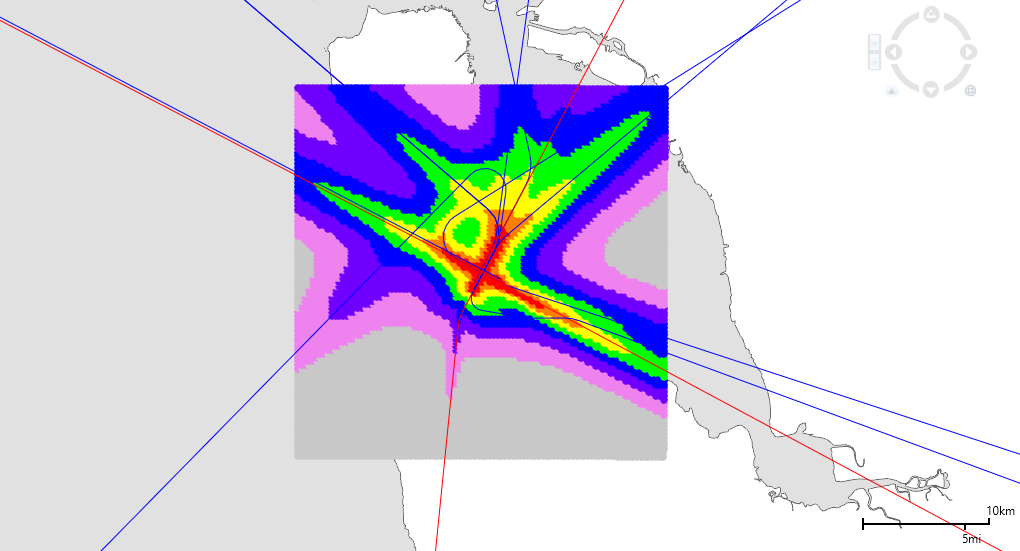FAA Makes Environmentally Responsible Decisions Using Aviation Environmental Design Tool
The Aviation Environmental Design Tool (AEDT) is a critical element in FAA’s federally required environmental review process, implemented in response to increasing air traffic and the modernization of the nation’s aviation infrastructure. AEDT dynamically models aircraft performance in space and time. With over 1,000 licenses in 46 countries to date, AEDT has become the de facto global reference model for considering the interdependencies between aircraft-related fuel burn, noise, and emissions, and their collective environmental effects.
Data scientists and software developers at the U.S. DOT Volpe Center have led the development and systems integration of AEDT. The U.S. DOT Volpe Center team collaborates with FAA’s Office of Environment and Energy, aviation manufacturers, and stakeholders from Environmental Protection Agency (EPA), the International Civil Aviation Organization (ICAO) Committee on Aviation Environmental Protection (CAEP), the European Organization for the Safety of Air Navigation (EUROCONTROL), and the FAA ASCENT Center of Excellence—a cooperative aviation research organization co-led by Washington State University, Massachusetts Institute of Technology, Georgia Tech, and many other universities and organizations to ensure the best-available data and methods are applied by the model. In addition to model development, U.S. DOT Volpe Center engineers support a number of analysis efforts with AEDT.

The U.S. government uses AEDT to understand the noise and emissions changes associated with operational and procedural changes, such as NextGen, as well as to inform domestic and international policy discussions. The model is also used to quantify emissions reductions associated with the replacement of airport equipment with low-/no-emission alternatives in support of FAA’s Voluntary Airport Low Emissions program.
AEDT Series 3, first made available to the public in fiscal year 2019, was a transformative release of the software that significantly improved the fidelity of aircraft performance, fuel burn, and emissions modeling at low speed and altitude. AEDT Version 3d was released to the public in March 2021. AEDT 3d users have access to new air quality modeling options, including a complete interface to EPA’s AERSURFACE land surface characteristics tool. The updated program also presents measured data on aircraft-produced nonvolatile particulate matter for the first time, thereby eliminating the need to estimate those data.
AEDT allows FAA to make environmentally responsible decisions on federal actions to improve the safety and efficiency of the NAS, while being responsive to community concerns on aircraft noise by relying on results generated with AEDT. Additionally, AEDT supports a wide array of aviation research, including the analytical capability to support policies and standards being developed by ICAO. This sophisticated platform has positioned the United States as a leader in providing objective, data-driven policy inputs to ICAO CAEP.
*This story appeared in the U.S. DOT Volpe Center’s January 2022 publication: The U.S. DOT Volpe Center’s 2021 Annual Project Accomplishments.
Celebrating more than 50 years of federal service to the nation, the U.S. DOT Volpe Center’s mission is to transform transportation for all.
